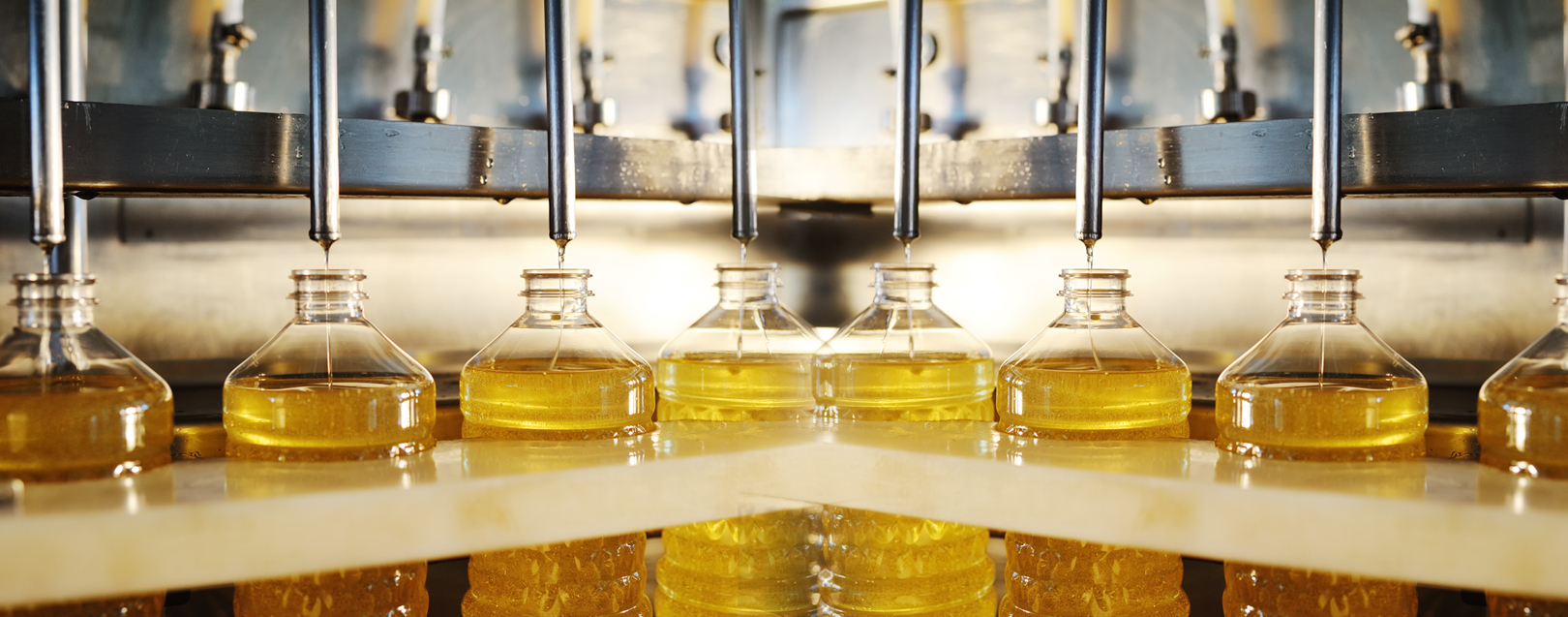
Glimpses of last week: Despite good monsoon, farming for food grain falls; Vegetable oil imports increase
By Abin Daya
The first round of returns filing for GST has happened, and businesses are slowly getting a hang of the processes, and are also understanding the tax better. Much work still needs to be done, and it will take at least two quarters, if not more before we can say that we have become comfortable with it, and it is business as usual again!
In the meantime, though, despite a good monsoon, aggregate acreage under cultivation is falling, particularly for food-grains. While the bumper harvest of last year should provide some relief, we will need to do much more to meet our ever-growing demand.
The kharif acreage is one of the topics that we deal with this week. Under the same topic, we also discuss a possible fall in cotton prices, due to the abundant supply situation.
A related topic is the increasing import of vegetable oils, edible and non-edible, and the fall in oilseed acreage. We also discuss the recent increase in import duty for Crude and Refined Palm Oil, and the impact it might have on the industry.
Another industry that is grappling with the question of import duty, or rather penal duty, is the solar modules industry. While the actual decision may take some more time to come, it doesn’t need to be said that the question is creating a lot of uncertainties for module manufacturers and power producers!
Vegetable oil imports increase by 34% in Jul
- India’s vegetable oil imports increased by 34% y-o-y in July 2017 to 1.54mn tonnes, as against 1.14mn tonnes during the same month last year
- Though the current oil year, which started on 01 Nov 2016, started off on a weak note with double digit negative growth in the first three months, numbers have picked up in the recent months
- Overall vegetable oil imports for the first nine months of the current oil year stand at 11.39mn tonnes, as against 10.9mn tonnes during same period last year, a growth of 4% y-o-y
- Imports during the past three months have grown by 35%, 15% and 34%, which have managed to bring the figures for the overall year into positive territory
- A glance at the inventory levels at the ports, and in the pipeline also helps understand the spike
- There has been an increase of 14.7% in port stock and 15.2% of pipeline inventory as on 01 Aug 2017, compared to the same date last year
- Inventory fell to its lowest level in the past one year on 01 Feb 2017, when it dropped to 1.73mn tonnes (port stock + pipeline inventory) as against 2.15mn tonnes as on 01 Aug 2016
- This also coincided with the recovery in imports, with 1.27mn tonnes of vegetable oil being imported in Feb, as against 1.11mn tonnes last year, an increase of 14%
- Considering that inventory levels have now grown to more than 2 months of average usage, it is likely that import figures could again see a dip in the coming months
- The other factor which could impact imports is the issue of import of crude oil and refined oil, particularly for palm oil imports
- Palm oil imports account for almost 60% of all edible oil imports, with the balance 40% being made up by import of soybean, sunflower, rapeseed and safflower oil
- While the ratio of Palm-oil to ‘Soft Oil’ has been in the range of 65-35, this has now changed to 60:40 over the past two years
- The other change that has happened in edible oils is the trend to import refined oils, rather than crude oils, which would then be refined and packed in India
- The proportion of crude oil in edible oil imports has dropped from 88% in 2014-15 to 80% during the first 9 months of the current oil year
- The Centre has recently hiked the import duty on crude palm oil from 7.5% to 15%, and on refined palm oil from 15% to 25%
- The differential duty on import of refined vs. crude palm oil has thus increased to 10% from the 7.5% earlier, which is expected to make domestic refining competitive
- The increase in duty has come into effect from Aug 11, 2017, and going forward, it is expected to result in import volumes of crude palm oil rising to higher levels
Kharif sowing slows down – drops below last year’s acreage
- Sowing in the ongoing kharif season seems to have slowed down, with acreage for most of the crops dropping below the previous year’s levels
- Except for Sugarcane and Cotton, acreage for Rice, Pulses, Coarse Cereals, Oilseeds and Jute & Mesta have all dropped below last year
- Overall acreage under Kharif sowing as per data released on 01 Sep 2017 is 1,028 Lakh Hectares (LHa), marginally less than 1034LHa during the same period last year
- For the week ended 30 Jun, acreage under cultivation was 91.6LHa, as against 67.8LHa during same period last year, an increase of 19%
- After hitting the peak during the week ended 7 Jul, incremental sown acreage has been steadily coming down, and has been dropping below the levels of last year
- While there are multiple reasons for the change in acreage, it is interesting to look at a few individual crops
- Solvent Extractors Association of India, the apex body of vegetable oil producers, have raised concerns about the dwindling oilseed acreage, because of persistently low prices
- Currently, soybean, rapeseed and groundnut are being sold below MSP and prices have dropped 20-30% below last year’s levels
- However, the increase in FRP for sugarcane, and the improved monsoons have helped increase sugarcane acreage by 10% over last year’s levels
- Area under cotton has increased by 18% over previous year, to 120LHa, as against 101.7LHa last year
- Favourable monsoon and attractive prices have encouraged many farmers to take up cotton, with increased sowing in almost all the major cotton growing states
- Total domestic output of cotton this year could be 10-12% higher than last year, which could lead to a decline in cotton prices
- While textile companies and users of cotton could stand to benefit in the coming months, farmers could find themselves at a disadvantage
- Already prices in the domestic market have fallen by more than 11% from their levels during Aug 2016
- While production is expected to increase by 10-12%, consumption is likely to be up by only 2%, leading to oversupply and pressure on prices
- Some respite might come from exports, where traditional buyers like China are expected to increase procurement to ramp up stocks
- However, international cotton prices are also expected to remain low, given the higher supplies expected from other producing countries
Anti-dumping duty proposal for solar modules turns into a contentious issue
- Power producers and module manufacturers seem to be grouping into opposite camps on the issue of anti-dumping duty on solar modules from China
- In one of our earlier weekly updates, we had mentioned that the Government is considering imposing anti-dumping duty on Solar modules, to protect the domestic industry
- The proposal was to impose the penal duty on modules from China, Taiwan and Malaysia, and not on solar cells, as the imported cells are being used by the manufacturers for modules
- However, almost all the recent solar auctions had the developers assuming a further 10-15% fall in module prices, which would help support the financial projections
- Modules account for about 50-60% of the project cost for a solar project, and anti-dumping duty on the modules, leading to a rise in module costs, is a serious concern for project executors
- What is interesting is that this is not the first time that the industry has asked for anti-dumping duty on modules – even in 2012 and 2014, the finance ministry had rejected the proposal despite the DGAD suggesting for the same
- Module manufacturers argue that such a penal duty would lead to a tariff increase of only Re.0.30 to Re.0.40 per unit, which can be easily absorbed in the current scenario
- The opportunities generated by the country’s ambitious solar generation targets will help the existing manufacturers to double their capacities in 15-20 months, while also attracting FDI from major Chinese manufacturers who currently export to India
- However, power producers expect the duty to increase solar tariffs by Re.0.60-Re.0.80 which would reduce the competitiveness of solar power as against thermal power
- Ultimately, the rise in tariff will be paid by the consumers, and that would defeat the objective of reducing cost for the end-consumer
- It will take some time for the anti-dumping investigation to be completed and the government to come out with the final decision, but in the interim, all projects being bid and awarded, will have an element of uncertainty, which may not be in the interest of anyone
Abin Daya the author of 'Basics of Trade: An India Perspective' is a FEMA expert, a career transaction banker, with close to 15 years of experience in corporate and transaction banking, in India.






